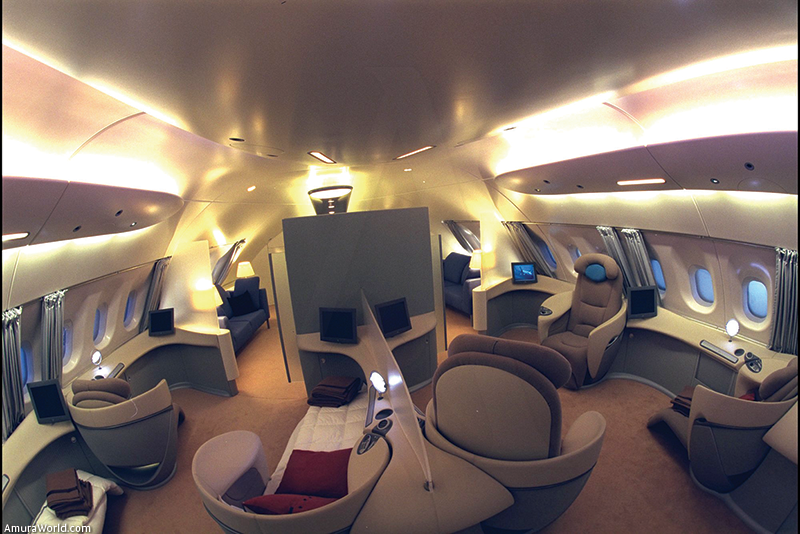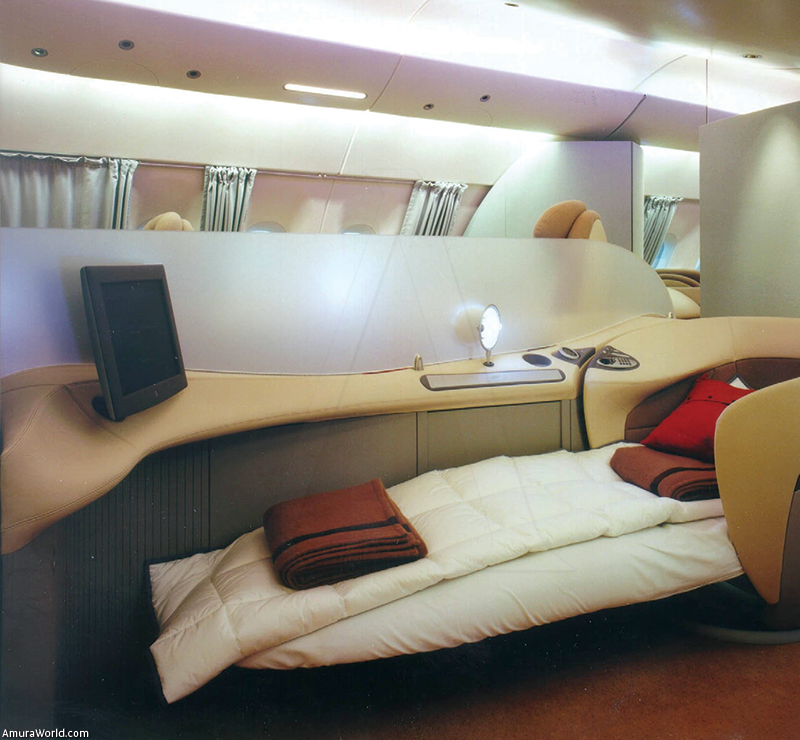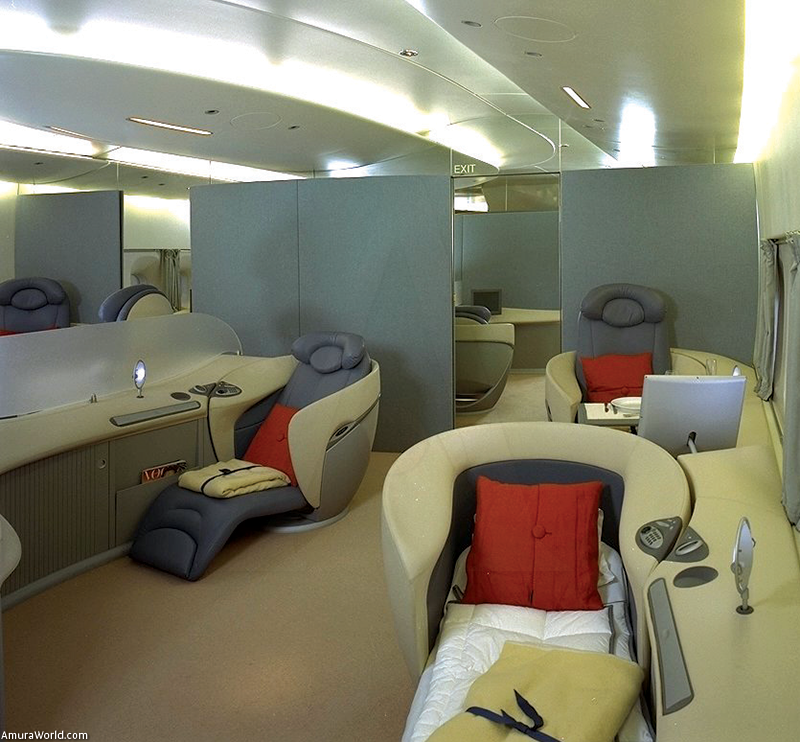The ACJ, designed over an A319, carries fewer passengers than the average commercial airline, but it offers deluxe interiors and allows passengers to keep in touch with their office while traveling from one country to another. It is ideal for official visits, because it provides the space necessary to comfortably transport both the government’s retinue and guests.
The spacious170 m3 cabin can be personalized in a variety of ways to meet corporate needs, providing space for up to 55 executives without sacrificing comfort. It is possible to have a totally luxurious suite with shower, room for relaxing, business center and conference room, top quality and totally functional, while assuring that the “private spaces” are really private.
For greater comfort there are models with leather seats and dining and work tables, and living rooms that feature soft arm chairs for sleeping. Some models—the client can choose the distribution— range from a luxurious design for heads of state, with an area for VIP support personnel, and a rest area, to a corporate design for a group of executives or an air ambulance.
Record sales
These characteristics translated into record sales for ACJ in 2004. They had 11 orders in the business jet market, the majority of them new clients that include private entrepreneurs looking for an “office in the sky.” This Airbus model made its inaugural flight in June 1997 and was seen as a solution for clients looking for a plane in which they could fly comfortably.
In addition to being twice as big as the typical business planes, the ACJ can make direct intercontinental flights (Dallas-Tokyo or New York Seoul) without losing time for technical stops. Its aerodynamic capacity allows it to fly at high altitudes for greater comfort and at a more efficient cruising speed of 0.80 to 0.82 Mach and an altitude of up to 41 000 feet, using advanced avionics equipment and cutting edge navigation systems.
As for landing, this model adapts as well to big airports with little space and heavy traffic as to small regional airports and remote airstrips. This is possible by one of its main characteristics: it is equipped with satellite navigation landing systems for any climatic condition. Equally, the Future Air Navigation System (FANS) offers the perspective of shortening flights more directly, especially in highly congested areas.
With its VIP design, the ACJ can fly, for example, with 10 executives for a distance of 6000 nm/11100 km, which would represent the London-Beijing route, and can also carry 48 passengers in perfect comfort for 4500 nm/8300 km. It is, without doubt, one of the great experiences for those who long to fly comfortably without loosing contact with the ground.
|
Basic arrangement |
|
• Private office for four with shower bath. • Executive First eight seats (1 lavatory) • Executive Cabin 16 seats (2 lavatories) • Communications center/kitchen |
|
Corporate Configuration |
|
• Private suite for 2 with lavatory/ shower • Super First eight seats/beds • Excellent Business 26 seats (1 lavatory) |
|
• Freight section that can accommodate up to 6800 kg (15,000 lb) of luggage. The two access doors open outwards. • An arrangement of up to six removable fuel tanks for a greater range, without the need of dismantling the doors. • Totally integrated third generation avionics system. • Equipped with IIIB Category for landings with low visibility. • Global Positioning System. • Qualified by SRBM and approved by ETOPS. • Can be equipped with TCASS Communications and the EGPWS system. |
Text: Laura Velázquez ± Photo: Airbus




